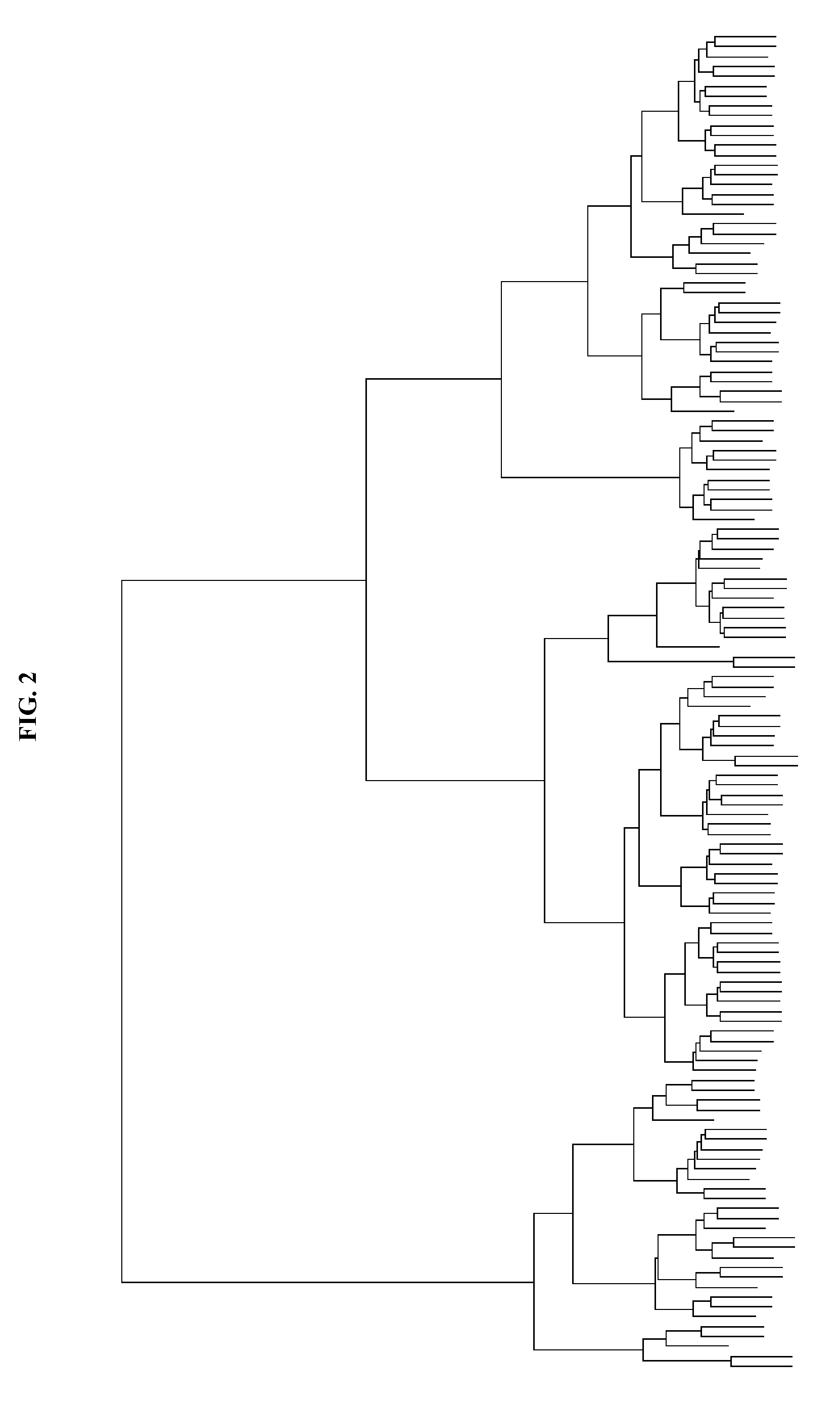Genomic classification of colorectal cancer based on patterns of gene copy number alterations
a colorectal cancer and gene copy number technology, applied in the field of colorectal cancer gene copy number alterations patterns, can solve the problems of poor response in clinical trials to agents, insufficient current staging of crc, and inability to represent the genetic heterogeneity of the parent tumor
- Summary
- Abstract
- Description
- Claims
- Application Information
AI Technical Summary
Benefits of technology
Problems solved by technology
Method used
Image
Examples
example 1
Cell Lines and Tissue Samples
[0210]We used 35 cell lines and 144 tumor samples to establish our CRC classification model. The sources of cell lines used in this study are listed in Table 1.
example 2
Step 1: DNA Extraction and Hybridization to SNPs Arrays
[0211]The AFFYMETRIX® GENECHIP® Mapping 100K Set SNP array (Matsuzaki et al., 2004) (Affymetrix, Inc., Santa Clara, Calif.) covers 116,204 single-nucleotide polymorphism (SNP) loci in the human genome with a mean inter-marker distance of 23.6 kb. The array set includes two chips, Xba240 and Hind240. The assays were carried out according to the manufacturer's instructions. Briefly, high molecular weight, genomic DNA was extracted from 30 mg tissue from each tumor or 5×106 cells from each cell line using a QIAGEN® DNEASY® kit (Qiagen, Valencia, Calif.). Two-hundred fifty nanograms of genomic DNA were digested with either HindIII or XbaI. Adaptors (XbaI, 5′ tctagagatc aggcgtctgt cgtgctcata a 3′; SEQ ID NO:2; HindIII, 5′ acgtagatca ggcgtctgtc gtgctcataa 3′; SEQ ID NO:3) were then ligated to the digested fragments that recognize the cohesive four base-pair (bp) overhangs. A generic primer that recognizes the adaptor sequence (5′ atta...
example 3
Step 2: Copy Number Determination and Detection of Copy Number Alterations
[0213]Genomic Suite software (version 6.08.0103) (Partek; St. Louis, Mo.) was used for low-level processing of the data to determine the copy numbers of each locus and define regions of copy number alteration. CEL files containing signals for all SNPs probes were loaded into the software, and copy numbers were calculated by comparing the signal intensities for tumor or cell line samples to those for a reference set of 48 normal female tissue samples, corrected to a baseline of 2. The reference set can also consist of other sets of normal samples, or paired normal tissues from the same patients of the tumor samples, measured by the same microarray platform.
[0214]The resulting probe-level copy number data were segmented, and the copy number alteration regions were detected in each sample. Specifically, probe-level copy numbers were segmented into regions using the following control parameters: (i) a region must ...
PUM
| Property | Measurement | Unit |
|---|---|---|
| Fraction | aaaaa | aaaaa |
| Fraction | aaaaa | aaaaa |
| Fraction | aaaaa | aaaaa |
Abstract
Description
Claims
Application Information
 Login to View More
Login to View More - R&D
- Intellectual Property
- Life Sciences
- Materials
- Tech Scout
- Unparalleled Data Quality
- Higher Quality Content
- 60% Fewer Hallucinations
Browse by: Latest US Patents, China's latest patents, Technical Efficacy Thesaurus, Application Domain, Technology Topic, Popular Technical Reports.
© 2025 PatSnap. All rights reserved.Legal|Privacy policy|Modern Slavery Act Transparency Statement|Sitemap|About US| Contact US: help@patsnap.com



